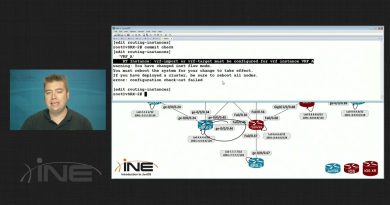Innovations in Railways: 4G and 5G Technologies and Gauge-Changing Trains
► Railways Explained aims to establish a WORLDWIDE COMMUNITY of all RAIL LOVERS, WORKERS AND EXPERTS, by creating regular, entertaining and educational railway content of high quality.
► If you find yourself in at least one of these three groups, support this idea by SUBSCRIBING TO RAILWAYS EXPLAINED.
—————————————————————————–
– Today, we continue the series dedicated to innovations in railway traffic!
In previous video we spoke about hydrogen-powered trains and drone-based maintenance of railway infrastructure. Also, we had a small discussion about what innovations are and what do they mean for the railway industry. If you didn’t, check out that video right away!
Now, we’ll talk about the use of 4G and 5G technology in rail traffic management systems and the trains capable of running at two (or more) different track gauges.
We decided to start this video with GSM-R, a 2G-based international wireless communications standard used for communication on railways and applications that are used for these purposes. It is, on one hand, a secure platform for voice and data communication between the railway operational staff (train drivers, dispatchers, shunting team members) and station controllers, and, on the other hand, it is a platform that enables (and guarantees!) smooth performance of trains for the speeds up to 500 km/h, without any communication loss.
Then, we presented South Korea’s experience related to developing a 4G-based, Korean Train Control System, which is about to replace (already outdated?) 2G technology. It uses so-called LTE-R protocol enabling smart video and audio and high-speed wireless voice and data communications – inside the train, between different trains and between the train and the ground.
In the second part of the video, we spoke about a procedure of bogie exchange and the impact it has on international railway traffic. Bogie exchange is a procedure in which a railway wagon is converted from one gauge to another – by removing the existing bogies, and installing a new, with differently spaced wheels.
We also spoke about Spanish experience with gauge-changing trains and the recent Chinese gauge-changing trainset prototype made by the CRRC.
– If you enjoyed this video, SHARE it with your rail-loving friends to help us raise our community, and of course leave your opinion in the COMMENT section and hit the LIKE button.
—————————————————————————–
► Stay connected with us on social media:
– Facebook: https://facebook.com/RailwaysExplaine…
– Instagram:https://www.instagram.com/railways_ex…… igshid=k0tv5loew79e&fbclid=IwAR0Ix2jPPbcUwhArt_iym9vzKgvrUQaLLH_4JkhILyzyY_upCyxTf5qxcwA
– Linkedin: https://www.linkedin.com/in/railways-……
Credits: https://drive.google.com/file/d/1Lmoq…
#Railways #Innovation #Communications
5g vs 4g



